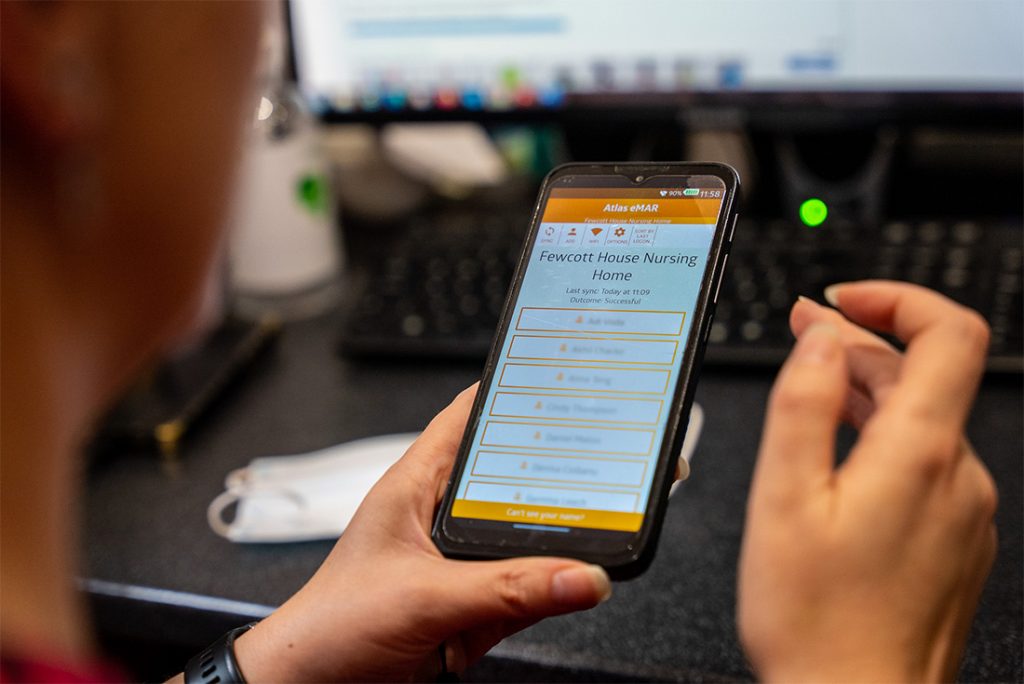In recent weeks, The Times launched a ground-breaking year-long inquiry into the future of health and social care, with a poll revealing that 85 per cent of voters thought the government was handling the NHS ‘badly’.
Now, with the increasingly ageing demographic, there’s an argument, particularly from a social care perspective, that the room for error when handling medicine management and administration has never been so critical, especially with such a physical strain currently strangling the NHS.
Inevitably, this forces us, as an industry, to adapt and implement new innovative ideas clinically proven to reduce the number of medication errors in care homes, taking into consideration everybody’s medication needs carefully.
If someone has multiple prescriptions, it’s paramount that a process is in place to ensure they are kept safe and medication errors are eliminated. After all, proper medication management has the power to provide better-targeted care, achieve the best outcomes for residents, and give family and friends much-needed peace of mind while reducing time and stress for carers.
Avoiding medication errors in care homes
So, to avoid preventable medication errors, it was paramount that we looked into streamlining our medication process with efficient and accurate policies and procedures to ensure medicines are consistently administered correctly and safely.
Naturally, this meant we were keen to identify a digital solution with a thorough procurement process that gave us control and assurance that the quality of care for our residents would not be compromised. As such, we were keen to implement an electronic medication record system that increased resident safety, improved care home efficiency and provided an accurate overview of local pharmacies.
When we first came across ATLAS eMAR, we were keen to implement the system; however, there were only a few pharmacies in our area capable of taking us on at the time, so we had to opt for an alternative solution. Finally, about a year and a half ago, following extensive research, we realised that the number of pharmacies connected to Person Centred Software’s ATLAS eMAR system had increased significantly; they now have a wide selection of pharmacies that could supply medications to our home – this prompted the decision to switch to Person Centred Software’s ATLAS eMAR system.
We found the software incredibly efficient within a short time, particularly from a time-saving element. As an example, our previous system forced our care team to carry laptops everywhere they went. ATLAS eMAR, on the other hand, uses hand-held android tablets that are quick and easy to use and can be operated with just one hand; they are small enough to prevent them from being bulky and cumbersome to carry around all day.
Additionally, the built-in barcode scanners enable our care team to scan the barcodes on the dispensing labels at the point of administration, confirming whether or not the scanned medicine is correct for the resident. If incorrect, the system immediately alerts the carer that an error has occurred. Because of this, resident safety has increased two-fold; we used to have around seven to eight medication errors in a year, though it’s become increasingly rare since we introduced ATLAS eMAR.
Furthermore, from an audit point of view, the system has been a godsend; I get daily reminders via email, telling me how yesterday’s medication round went and how we are all doing with stock. On top of this, the software tracks everything in real-time, producing a full audit trail that offers complete oversight of the entire care operation.
From a staff perspective, it’s also incredibly user-friendly. From day one, we’ve had practically zero problems, and the implementation process was straightforward. It was quick to set up, too, enabling our care team to pick things up effortlessly; it helped to ensure safety, increase accountability and reduce the burden of stock control and prescription management. If I had to pick the best quality I’ve seen so far, it would be the fact that it saves our care team an overwhelming amount of time, which can instead be applied to assuring the best possible care for our residents.
According to the Care Quality Commission (CQC), it’s one of the safest systems they’ve ever seen. Our most recent inspection was in October, which resulted in an ‘outstanding’ rating by CQC. As a result, we decided to roll out the system across our other two homes, St Annes and Leafield; one is currently going through the initial implementation process, though the other has just completed implementation and is relishing the benefits.
Overall, we couldn’t be happier with the results and the system’s impact on managing our medication administration process. I’m delighted that, as a business, we can offer a full ecosystem of care that places its staff and residents at the centre of its practices. I encourage others in my position to consider a similar approach – I promise you won’t regret it!
About the author
Gabriela Denisa Ciobanu Vida is the Registered Manager at Fewcott House Nursing Home, a family-run business located 4 miles north of Bicester, in rural North Oxfordshire, with a 40 bedded nursing home specialising in looking after people with a wide range of needs, including dementia, Parkinson’s disease, learning difficulties and anyone with a mental health issue requiring nursing and palliative care.

